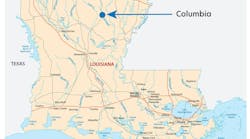By OGJ editors
HOUSTON, Jan. 5 -- Demand for asphalt in the US is expected to surpass 37 million tons in 2007, or a projected expansion of 1.5%/year, according to a recent study released by Freedonia Group Inc., Cleveland. This increase will generate demand for 206 million bbl of primary asphalt, the analyst said.
The study, entitled, "Asphalt Products & Markets," analyzed the $9.6 billion/year US asphalt products industry. "Increases in asphalt demand in paving applications will be aided by road construction and maintenance activity," Freedonia found.
Asphalt cement, Freedonia noted, would remain "the dominant paving product," while demand for emulsified asphalts are expected to grow faster based on in-place recycling, microsurfacing, and chip seal applications.
Modified bitumen and built-up roofing, meanwhile, will lead gains in the smaller, but more lucrative, asphalt-roofing segment.
But, Freedonia added, "One risk to the forecast is the eventual outcome of efforts in the US Congress to enact federal transportation legislation to succeed the Transportation Equity Act for the 21st Century (TEA-21).
"Concerns about homeland security and other federal budget priorities may limit potential increases in federal highway spending form the levels in TEA-21, constraining the market for asphalt paving products."
During the forecast period, Freedonia expects the nonresidential building market for asphalt "will enjoy the best growth prospects."
Freedonia's study is based on historical demand data for 1992, 1997, and 2002 and forecasted to 2007 and 2012 by asphalt product such as cement, emulsions, cutback, singles, built-up roofing, modified bitumen, and roll roofing; the study also broke data down by market and US region.
Thirty-six key companies were analyzed for the study, which also examined the market environment and detailed industry structure and market share.
